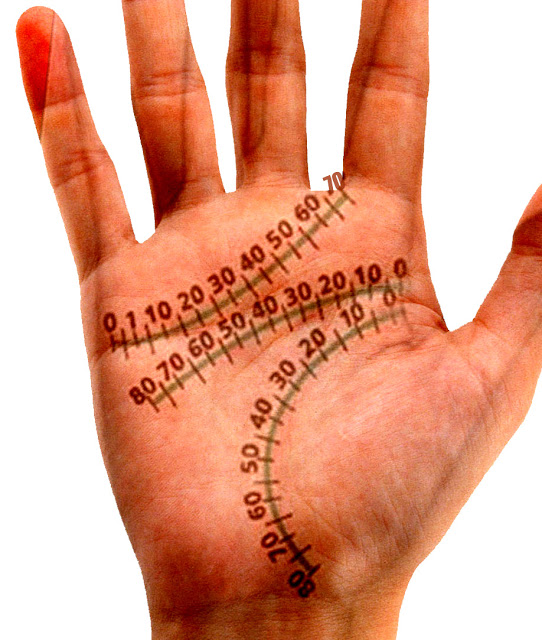

Palmistry Life Line: Understanding Your Life's Journey Through Palm Reading
Palmistry, also known as chiromancy, is an ancient practice that offers deep insights into an individual’s life path, personality, and future through the study of the hands. Among the various lines present on the palm, the life line holds significant importance as it is believed to reflect a person's vitality and the quality of their life. This article delves into the intricacies of the life line, its interpretations, and what it can reveal about your life.
In this comprehensive guide, we will explore the various aspects of the life line in palmistry, including its characteristics, how to read it, and the common misconceptions surrounding it. Whether you are a novice or someone looking to deepen your understanding of palmistry, this article will serve as a valuable resource.
Join us as we embark on a fascinating journey through the world of palmistry, specifically focusing on the life line and its significance. By the end of this article, you will gain a clearer understanding of how the life line can reflect your life experiences, potential challenges, and opportunities.
Table of Contents
- What is the Life Line?
- Characteristics of the Life Line
- How to Read the Life Line
- Significance of the Life Line in Palmistry
- Common Misconceptions About the Life Line
- Life Line Interpretations
- Factors Affecting the Life Line
- Conclusion
What is the Life Line?
The life line is one of the most prominent lines on the palm and is located in the area between the thumb and index finger, curving around the base of the thumb. Contrary to popular belief, the life line does not predict the length of one's life; instead, it reflects the quality of life and the individual's vitality.
History of Palmistry
Palmistry has roots in ancient civilizations, with practices dating back to the Indus Valley civilization and ancient Greece. Throughout history, palmists have studied the hands to predict various life aspects, including health, relationships, and personal challenges.
The Anatomy of the Life Line
The life line is characterized by its length, depth, and curvature. Each of these attributes can provide insights into a person's health and lifestyle. A long, deep life line is typically associated with vitality, while a short, faint line may suggest challenges or a more cautious approach to life.
Characteristics of the Life Line
When examining the life line, several characteristics come into play:
- Length: A long life line is often interpreted as a sign of a healthy and active life, while a shorter line may indicate a more cautious lifestyle.
- Depth: A deep life line suggests strong vitality and health, whereas a faint line may indicate a more fragile constitution.
- Curvature: The curve of the life line can represent how one approaches life; a wider curve suggests an adventurous spirit, while a straighter line may indicate a more reserved personality.
How to Read the Life Line
Reading the life line involves observing its various characteristics as mentioned earlier. Here’s how to begin:
- **Locate the Life Line:** Find the line that curves around the base of your thumb.
- **Assess the Length:** Determine if the line is long or short in relation to the palm.
- **Examine the Depth:** Check if the line is deep and clear or faint and broken.
- **Note the Curvature:** Observe the curvature of the line to understand your life approach.
Significance of the Life Line in Palmistry
The life line provides insights into various aspects of life, including:
- Health: A strong life line is often associated with good health and longevity.
- Life Changes: Breaks or changes in the line may indicate significant life transitions or challenges.
- Energy Levels: The overall depth and clarity of the line can reflect an individual's energy and vitality.
Common Misconceptions About the Life Line
There are several misconceptions surrounding the life line:
- Length Equals Longevity: Many believe that a longer life line means a longer life, but it primarily represents the quality of life.
- Fate is Fixed: The life line reflects potential but does not dictate one's fate. Life choices play a significant role in shaping the future.
- Universal Interpretations: Interpretations can vary significantly among different cultures and palmists.
Life Line Interpretations
Here are some common interpretations based on the characteristics of the life line:
- Long and Deep Line: Indicates a healthy and fulfilling life.
- Short and Faint Line: Suggests a need for caution and awareness of health matters.
- Broken Line: May indicate significant life changes or challenges.
Factors Affecting the Life Line
Several factors can influence the characteristics of the life line:
- Genetics: Family history can play a role in health and vitality.
- Lifestyle Choices: Diet, exercise, and stress levels can impact one's health and energy.
- Life Experiences: Major life events can leave a mark on the life line.
Conclusion
In summary, the life line is a crucial aspect of palmistry that provides valuable insights into an individual's life journey, health, and personality. By understanding how to read and interpret the life line, you can gain a deeper appreciation for the experiences that shape your life.
We encourage you to explore your palm and discover what your life line reveals about you. If you found this article informative, please leave a comment below, share it with others, or explore more articles on palmistry and self-discovery.
The Best Eye Makeup Remover: A Comprehensive Guide
Understanding Ombre Hair Color: A Comprehensive Guide
Primer For Mature Skin: The Ultimate Guide To Flawless Makeup



